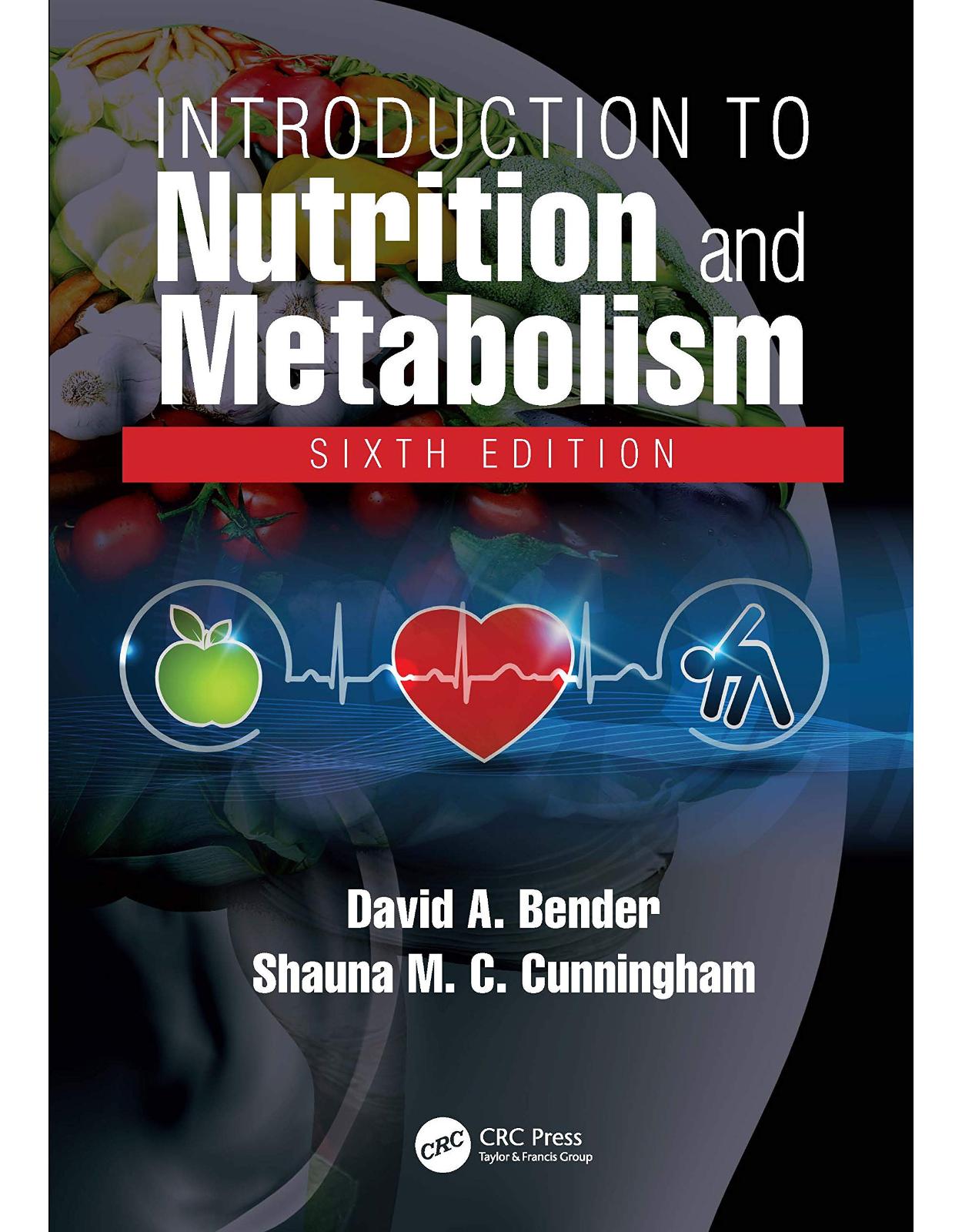
Introduction to Nutrition and Metabolism
Livrare gratis la comenzi peste 500 RON. Pentru celelalte comenzi livrarea este 20 RON.
Disponibilitate: La comanda in aproximativ 4 saptamani
Autor: David A Bender
Editura: CRC Press
Limba: Engleza
Nr. pagini: 452
Coperta: Paperback
Dimensiuni: 17.27 x 3.3 x 24.38 cm
An aparitie: 5 Feb. 2021
Description:
Introduction to Nutrition and Metabolism equips readers with an understanding of the scientific basis of what we call a healthy diet. Now in its sixth edition, this highly recognized textbook provides clear explanations of how nutrients are metabolized and gives the principles of biochemistry needed for comprehending the science of nutrition. This full-color textbook explores the need for food and the uses to which food is put in the body, as well as the interactions between health and diet. Outlining the scientific basis behind nutritional requirements and recommendations, this new edition has been extensively revised to reflect current knowledge. Features: Lists key objectives at the beginning, and summary points at the end of each chapter. Accompanying online resources include interactive tutorial exercises based on interpretation of clinical and research data. Covers topics including: Chemical reactions and catalysis by enzymes; the role of ATP; digestion and absorption of carbohydrates, fats and proteins; issues associated with being overweight; problems of malnutrition; diet and health; and vitamin and mineral requirements and functions. Updated sections focus on the interaction of the gut microbiome and epigenetics with our metabolic responses to diet. Provides a foundation of scientific knowledge for the interpretation and evaluation of future advances in nutrition and health sciences. Following its predecessors, this sixth edition is relevant to any student or practitioner interested in how diet influences our health, including in the fields of nutrition, dietetics, medicine and public health.
Table of Contents:
Preface
Authors
Additional Resources on the Website: Metabolism Online – The Virtual Tutorial
chapter one Why Eat?
Objectives
1.1 The Need for Water
1.2 The Need for Energy
1.2.1 Units of Energy
1.3 Metabolic Fuels
1.3.1 The Need for Carbohydrate and Fat
1.3.2 The Need for Protein
1.3.3 The Need for Micronutrients: Minerals and Vitamins
1.4 Hunger and Appetite
1.4.1 Hunger and Satiety: Short-Term Control of Feeding
1.4.1.1 Nutrient Sensing in the Hypothalamus
1.4.1.2 Ghrelin: The Appetite-Stimulating Hormone
1.4.2 Long-Term Control of Food Intake and Energy Expenditure: The Hormone Leptin
1.4.3 Appetite
1.4.3.1 Taste and Flavor
1.4.4 Why Do People Eat What They Do?
1.4.4.1 The Availability and Cost of Food
1.4.4.2 Religion, Habit and Tradition
1.4.4.3 Organic Foods
1.4.4.4 Luxury Status of Scarce and Expensive Foods
1.4.4.5 Social Functions of Food
1.4.4.6 Food Allergy and Intolerance
1.4.5 Eating Disorders
1.4.5.1 Anorexia Nervosa
1.4.5.2 Bulimia Nervosa
1.4.5.3 Binge Eating Disorder
1.4.5.4 Other Eating Disorders
Key Points
chapter two Enzymes and Metabolic Pathways
Objectives
2.1 Chemical Reactions: Breaking and Making Covalent Bonds
2.1.1 Equilibrium
2.1.2 Catalysis
2.2 Enzymes
2.2.1 Specificity of Enzymes
2.2.2 Stages in an Enzyme-Catalyzed Reaction
2.2.3 Units of Enzyme Activity
2.3 Factors Affecting Enzyme Activity
2.3.1 The Effect of pH
2.3.2 The Effect of Temperature
2.3.3 The Effect of Substrate Concentration
2.3.3.1 Experimental Determination of Km and Vmax
2.3.3.2 Enzymes with Two Substrates
2.3.3.3 Cooperative (Allosteric) Enzymes
2.3.4 Inhibition of Enzyme Activity
2.3.4.1 Irreversible Inhibitors
2.3.4.2 Competitive Reversible Inhibitors
2.3.4.3 Noncompetitive Reversible Inhibitors
2.3.4.4 Uncompetitive Reversible Inhibitors
2.4 Coenzymes and Prosthetic Groups
2.4.1 Coenzymes and Metal Ions in Oxidation and Reduction Reactions
2.4.1.1 Metal Ions
2.4.1.2 Riboflavin and Flavoproteins
2.4.1.3 The Nicotinamide Nucleotide Coenzymes: NAD and NADP
2.5 The Classification and Naming of Enzymes
2.6 Metabolic Pathways
2.6.1 Linear and Branched Pathways
2.6.2 Spiral or Looped Reaction Sequences
2.6.3 Cyclic Pathways
2.7 Enzymes in Clinical Chemistry and Medicine
2.7.1 Measurement of Metabolites in Blood, Urine and Tissue Samples
2.7.2 Measurement of Enzymes in Blood Samples
2.7.3 Assessment of Vitamin Nutritional Status
Key Points
chapter three The Role of ATP in Metabolism
Objectives
3.1 Adenine Nucleotides
3.2 Functions of ATP
3.2.1 The Role of ATP in Endothermic Reactions
3.2.2 Transport of Materials across Cell Membranes
3.2.2.1 Protein Binding for Concentrative Uptake
3.2.2.2 Metabolic Trapping
3.2.2.3 Active Transport
3.2.2.4 P-Type Transporters
3.2.2.5 ATP-Binding Cassette (ABC) Transporters
3.2.2.6 Sodium Pump
3.2.3 The Role of ATP in Muscle Contraction
3.2.3.1 Creatine Phosphate in Muscle
3.3 Phosphorylation of ADP to ATP
3.3.1 Oxidative Phosphorylation: ATP Synthesis Linked to the Oxidation of Metabolic Fuels
3.3.1.1 The Mitochondrion
3.3.1.2 The Mitochondrial Electron Transport Chain
3.3.1.3 Phosphorylation of ADP Linked to Electron Transport
3.3.1.4 Coupling of Electron Transport, Oxidative Phosphorylation and Fuel Oxidation
3.3.1.5 Uncouplers
3.3.1.6 Respiratory Poisons
Key Points
chapter four Digestion and Absorption
Objectives
4.1 The Gastrointestinal Tract
4.2 Digestion and Absorption of Carbohydrates
4.2.1 Classification of Carbohydrates
4.2.1.1 Glycemic Index
4.2.1.2 Monosaccharides
4.2.1.3 Sugar Alcohols
4.2.1.4 Disaccharides
4.2.1.5 Reducing and Nonreducing Sugars
4.2.1.6 Polysaccharides: Starches and Glycogen
4.2.1.7 Dietary Fiber
4.2.2 Carbohydrate Digestion and Absorption
4.2.2.1 Starch Digestion
4.2.2.2 Digestion of Disaccharides
4.2.2.3 Absorption of Monosaccharides
4.3 Digestion and Absorption of Fats
4.3.1 Classification of Dietary Lipids
4.3.1.1 Fatty Acids
4.3.1.2 Phospholipids
4.3.1.3 Cholesterol and the Steroids
4.3.2 Digestion and Absorption of Triacylglycerols
4.3.2.1 Bile Salts
4.3.2.2 Lipid Absorption and Chylomicron Formation
4.4 Digestion and Absorption of Proteins
4.4.1 Amino Acids
4.4.2 Protein Structure and Denaturation of Proteins
4.4.2.1 Secondary Structure of Proteins
4.4.2.2 Tertiary and Quaternary Structures of Proteins
4.4.2.3 Denaturation of Proteins
4.4.3 Protein Digestion
4.4.3.1 Activation of Zymogens of Proteolytic Enzymes
4.4.3.2 Absorption of the Products of Protein Digestion
4.5 Absorption of Vitamins and Minerals
4.5.1 Absorption of Lipid-Soluble Vitamins and Cholesterol
4.5.2 Absorption of Water-Soluble Vitamins
4.5.2.1 Absorption of Vitamin B12
4.5.3 Absorption of Minerals
4.5.3.1 Iron Absorption
Key Points
chapter five Energy Nutrition: The Metabolism of Carbohydrates and Fats
Objectives
5.1 Estimation of Energy Expenditure
5.1.1 Indirect Calorimetry and the Respiratory Quotient (RQ)
5.1.2 Long-Term Measurement of Energy Expenditure: The Dual Isotopically Labeled Water Method
5.1.3 Calculation of Energy Expenditure
5.1.3.1 Basal Metabolic Rate
5.1.3.2 Energy Costs of Physical Activity
5.1.3.3 Diet-Induced Thermogenesis
5.2 Energy Balance and Changes in Body Weight
5.3 Metabolic Fuels in the Fed and Fasting States
5.3.1 The Fed State
5.3.2 The Fasting State
5.4 Energy-Yielding Metabolism
5.4.1 Glycolysis: The (Anerobic) Metabolism of Glucose
5.4.1.1 Transfer of NADH Formed during Glycolysis into the Mitochondria
5.4.1.2 Reduction of Pyruvate to Lactate: Anaerobic Glycolysis
5.4.2 The Pentose Phosphate Pathway: An Alternative to Glycolysis
5.4.2.1 The Pentose Phosphate Pathway in Red Blood Cells: Favism
5.4.3 Metabolism of Pyruvate
5.4.3.1 Oxidation of Pyruvate to Acetyl CoA
5.4.4 Oxidation of Acetyl CoA: The Citric Acid Cycle
5.4.4.1 The Citric Acid Cycle as Pathway for Metabolic Interconversion
5.4.4.2 Complete Oxidation of Four- and Five-Carbon Compounds
5.5 Metabolism of Fats
5.5.1 Carnitine and the Transport of Fatty Acids into the Mitochondrion
5.5.2 ß-Oxidation of Fatty Acids
5.5.3 Ketone Bodies
5.6 Tissue Reserves of Metabolic Fuels
5.6.1 Synthesis of Fatty Acids and Triacylglycerols
5.6.1.1 Unsaturated Fatty Acids
5.6.1.2 Synthesis of Triacylglycerol
5.6.2 Plasma Lipoproteins
5.6.2.1 Chylomicrons
5.6.2.2 Very Low Density Lipoproteins, Intermediate-Density Lipoproteins and Low-Density Lipoproteins
5.6.2.3 High-Density Lipoproteins
5.6.3 Glycogen
5.6.3.1 Glycogen Utilization
5.7 Gluconeogenesis: The Synthesis of Glucose from Noncarbohydrate Precursors
Key Points
chapter six Diet and Health: Nutrition and Chronic Noncommunicable Diseases
Objectives
6.1 Chronic Noncommunicable Diseases (the “Diseases of Affluence”)
6.2 Types of Evidence Linking Diet and Chronic Diseases
6.2.1 Secular Changes in Diet and Disease Incidence
6.2.2 International Correlations between Diet and Disease Incidence
6.2.3 Studies of Migrants
6.2.4 Case-Control Studies
6.2.5 Prospective Studies
6.3 Guidelines for a Prudent Diet
6.3.1 Energy Intake
6.3.2 Fat Intake
6.3.2.1 The Type of Fat in the Diet
6.3.3 Carbohydrate Intake
6.3.3.1 Sugars in the Diet
6.3.3.2 Undigested Carbohydrates (Dietary Fiber and Non-starch Polysaccharides)
6.3.4 The Gut Microbiome, Diet and Disease
6.3.5 Salt
6.3.6 Alcohol
6.4 Nutritional Genomics: Interactions between Diet and Genes
6.4.1 Epigenetic Programming of the Genome
6.4.1.1 Epigenetic Mechanisms
6.4.1.2 Nutritional Epigenetics
6.4.1.3 In Utero and Transgenerational Epigenetic Inheritance
6.5 Free Radicals, Oxidative Damage and Antioxidant Nutrients
6.5.1 Tissue Damage by Oxygen Radicals
6.5.2 Sources of Oxygen Radicals
6.5.2.1 Reoxidation of Reduced Flavins
6.5.2.2 The Macrophage Respiratory Burst
6.5.2.3 Formation of Nitric Oxide
6.5.2.4 Nonenzymic Formation of Radicals
6.5.3 Antioxidant Nutrients and Non-Nutrients: Protection against Radical Damage
6.5.3.1 Superoxide Dismutase, Peroxidases and Catalase
6.5.3.2 Glutathione Peroxidase
6.5.3.3 ß-Carotene and Other Carotenes
6.5.3.4 Vitamin C: An Antioxidant and a Prooxidant
6.5.3.5 Intervention Trials with Vitamin E
6.5.3.6 The Antioxidant Paradox
6.6 Homocysteine in Cardiovascular Disease
6.6.1 Factors Affecting Plasma Homocysteine
6.6.1.1 Polymorphisms of Methylene Tetrahydrofolate Reductase
6.6.1.2 Intervention Trials with Folate and VitaminsB6 and B12
6.7 Other Potentially Protective Compounds in Foods
6.7.1 Inhibition of Cholesterol Absorption or Synthesis
6.7.2 Inhibition of Carcinogen Activation and Increased Conjugation of Activated Metabolites
6.7.2.1 Allyl Sulfur Compounds
6.7.2.2 Glucosinolates
6.7.2.3 Flavonoids
6.7.3 Phytoestrogens
6.7.4 Miscellaneous Actions of Phytochemicals
Key Points
chapter seven Overweight and Obesity
Objectives
7.1 Desirable Body Weight
7.1.1 Body Mass Index (BMI)
7.1.2 Estimation of Body Fat
7.1.2.1 Determination of Body Density
7.1.2.2 Determination of Total Body Water or Potassium
7.1.2.3 Imaging Techniques
7.1.2.4 Measurement of Whole Body Electrical Conductivity and Impedance
7.1.2.5 Measurement of Skinfold Thickness
7.2 Problems of Overweight and Obesity
7.2.1 Social Problems of Obesity
7.2.2 Health Risks of Obesity
7.2.2.1 The Distribution of Excess Adipose Tissue
7.2.3 Obesity and the Metabolic Syndrome
7.2.3.1 Insulin Resistance and Hyperinsulinism
7.2.3.2 Adiponectin
7.2.3.3 Resistin
7.2.3.4 Chemerin
7.2.3.5 Macrophage Infiltration of Adipose Tissue
7.2.3.6 Excessive Synthesis of Cortisol
7.3 Causes and Treatment of Obesity
7.3.1 Energy Expenditure
7.3.2 Availability of Food
7.3.3 Control of Appetite
7.3.4 How Obese People Can be Helped to Lose Weight
7.3.4.1 Starvation
7.3.4.2 Very Low Energy Diets
7.3.4.3 Conventional Diets
7.3.4.4 Very Low Carbohydrate (Ketogenic) Diets
7.3.4.5 Low Glycemic Index Diets
7.3.4.6 High-Fiber Diets
7.3.4.7 Alternating Food Restriction and Free Consumption
7.3.4.8 “Diets” That Probably Won’t Work
7.3.4.9 Slimming Patches
7.3.4.10 Sugar Substitutes
7.3.4.11 Fat Substitutes
7.3.4.12 Pharmacological Treatment of Obesity
7.3.4.13 Surgical Treatment of Obesity
7.3.4.14 Help and Support
Key Points
chapter eight Protein-Energy Malnutrition: Problems of Undernutrition
Objectives
8.1 Problems of Deficiency
8.2 Protein-Energy malnutrition
8.2.1 Detection of Malnutrition in Adults
8.3 Marasmus
8.3.1 Causes of Marasmus and Vulnerable Groups of the Population
8.3.1.1 Malabsorption
8.3.1.2 Food Intolerance and Allergy
8.4 Cachexia
8.4.1 Hypermetabolism in Cachexia
8.4.2 Increased Protein Catabolism in Cachexia
8.5 Kwashiorkor
8.5.1 Factors in the Etiology of Kwashiorkor
8.5.2 Rehabilitation of Malnourished Children
Key Points
chapter nine Protein Nutrition and Metabolism
Objectives
9.1 Nitrogen Balance and Protein Requirements
9.1.1 Dynamic Equilibrium
9.1.1.1 Mechanisms Involved in Tissue Protein Catabolism
9.1.2 Protein Requirements
9.1.2.1 Protein Requirements for Physical Activity and Body Building
9.1.2.2 Protein Requirements of Children
9.1.2.3 Protein Losses in Trauma and Infection: Requirements for Convalescence
9.1.3 Essential Amino Acids
9.1.3.1 Protein Quality and Complementation
9.1.3.2 Unavailable Amino Acids and Protein Digestibility
9.2 Protein Synthesis
9.2.1 The Structure and Information Content of DNA
9.2.1.1 DNA Replication
9.2.1.2 The Genetic Code
9.2.2 Ribonucleic Acid
9.2.2.1 Transcription to Form Messenger RNA
9.2.3 Translation of mRNA: The Process of Protein Synthesis
9.2.3.1 Transfer RNA
9.2.3.2 Protein Synthesis on the Ribosome
9.2.3.3 The Energy Cost of Protein Synthesis
9.2.3.4 Posttranslational Modification of Proteins
9.3 Metabolism of Amino Acids
9.3.1 Metabolism of the Amino Nitrogen
9.3.1.1 Deamination
9.3.1.2 Transamination
9.3.1.3 Metabolism of Ammonia
9.3.1.4 Synthesis of Urea
9.3.1.5 Incorporation of Nitrogen in Biosynthesis
9.3.2 Metabolism of Amino Acid Carbon Skeletons
Key Points
chapter ten The Integration and Control of Metabolism
Objectives
10.1 Patterns of Metabolic Regulation
10.2 Intracellular Regulation of Enzyme Activity
10.2.1 Allosteric Modification of the Activity of Regulatory Enzymes
10.2.2 Control of Glycolysis: The Allosteric Regulation of Phosphofructokinase
10.2.2.1 Feedback Control of Phosphofructokinase
10.2.2.2 Feed-Forward Control of Phosphofructokinase
10.2.2.3 Substrate Cycling
10.3 Responses to Fast-Acting Hormones by Covalent Modification of Enzyme Proteins
10.3.1 Membrane Receptors and G-Proteins
10.3.2 Cyclic AMP and Cyclic GMP as Second Messengers
10.3.2.1 Amplification of the Hormone Signal
10.3.2.2 Desensitization of the Adrenaline Receptor
10.3.3 Inositol Trisphosphate and Diacylglycerol as Second Messengers
10.3.3.1 Amplification of the Hormone Signal
10.3.4 The Insulin Receptor
10.4 Responses to Slow-Acting Signals by Changes in Enzyme Synthesis
10.4.1 Slow-Acting Hormones
10.4.1.1 Amplification of the Hormone Signal
10.4.2 Dietary Control of Enzyme Expression
10.5 Hormonal Control in the Fed and Fasting States
10.5.1 Hormonal Control of Adipose Tissue Metabolism
10.5.2 Control of Lipid Metabolism in the Liver
10.6 Selection of Fuels for Muscle Activity
10.6.1 The Effect of Work Intensity on Muscle Fuel Selection
10.6.2 Muscle Fuel Utilization in the Fed and Fasting States
10.6.2.1 Regulation of Fatty Acid Metabolism in Muscle
10.7 Diabetes Mellitus: A Failure of Regulation of Blood Glucose Concentration
10.7.1 Adverse Effects of Poor Glycemic Control
Key Points
chapter eleven Micronutrients: The Vitamins and Minerals
Objectives
11.1 Determination of Requirements and Reference Intakes
11.1.1 Dietary Reference Values
11.1.1.1 Supplements and Safe Levels of Intake
11.1.2 The Vitamins
11.2 Vitamin A
11.2.1 Vitamers and International Units
11.2.2 Metabolism and Storage of Vitamin A and Provitamin A Carotenoids
11.2.2.1 Carotene Dioxygenase
11.2.2.2 Plasma Retinol-Binding Protein
11.2.3 Metabolic Functions of Vitamin A and Carotenes
11.2.3.1 Vitamin A in Vision
11.2.3.2 Retinoic Acid and the Regulation of Gene Expression
11.2.3.3 The Antioxidant Function of Carotenes
11.2.4 Vitamin A Deficiency: Night Blindness and Xerophthalmia
11.2.5 Vitamin A Requirements and Reference Intakes
11.2.5.1 Assessment of Vitamin A Status
11.2.6 Toxicity of Vitamin A
11.2.6.1 Teratogenicity of Vitamin A
11.2.7 Interactions of Vitamin A with Drugs and Other Nutrients
11.3 Vitamin D
11.3.1 Vitamers and International Units
11.3.2 Absorption and Metabolism of Vitamin D
11.3.2.1 Synthesis of Vitamin D in the Skin
11.3.2.2 Metabolism of Cholecalciferol
11.3.2.3 Regulation of Vitamin D Metabolism
11.3.3 Metabolic Functions of Vitamin D
11.3.4 Vitamin D Deficiency: Rickets and Osteomalacia
11.3.5 Vitamin D Requirements and Reference Intakes
11.3.6 Vitamin D Toxicity
11.3.7 Interactions with Drugs and Other Nutrients
11.4 Vitamin E
11.4.1 Vitamers and Units of Activity
11.4.2 Absorption and Metabolism of Vitamin E
11.4.3 Metabolic Functions of Vitamin E
11.4.3.1 Non-antioxidant Actions of Vitamin E
11.4.4 Vitamin E Deficiency
11.4.5 Vitamin E Requirements
11.4.5.1 Indices of Vitamin E Status
11.4.5.2 Higher Levels of Intake
11.4.6 Interactions with Other Nutrients
11.5 Vitamin K
11.5.1 Vitamers
11.5.2 Dietary Sources, Bacterial Synthesis and Metabolism of Vitamin K
11.5.3 Metabolic Functions of Vitamin K
11.5.4 Vitamin K Deficiency and Requirements
11.5.5 Toxicity and Drug Interactions
11.6 Thiamin (Vitamin B1)
11.6.1 Absorption and Metabolism of Thiamin
11.6.2 Metabolic Functions of Thiamin
11.6.3 Thiamin Deficiency
11.6.3.1 Dry Beriberi
11.6.3.2 Wet Beriberi
11.6.3.3 Acute Pernicious (Fulminating) Beriberi: Shoshin Beriberi
11.6.3.4 Wernicke–Korsakoff Syndrome
11.6.4 Thiamin Requirements
11.6.5 Assessment of Thiamin Status
11.7 Riboflavin (Vitamin B2)
11.7.1 Absorption and Metabolism of Riboflavin
11.7.1.1 Riboflavin Balance
11.7.2 Metabolic Functions of the Flavin Coenzymes
11.7.2.1 Flavins and Oxidative Stress
11.7.3 Riboflavin Deficiency
11.7.3.1 Resistance to Malaria in Riboflavin Deficiency
11.7.4 Riboflavin Requirements
11.7.5 Assessment of Riboflavin Nutritional Status
11.7.6 Interactions with Drugs and Other Nutrients
11.8 Niacin
11.8.1 Vitamers and Niacin Equivalents
11.8.1.1 Unavailable Niacin in Cereals
11.8.2 Absorption and Metabolism of Niacin
11.8.2.1 Catabolism of NAD(P)
11.8.2.2 Urinary Excretion of Niacin and Metabolites
11.8.3 Metabolic Functions of Niacin
11.8.4 Pellagra: A Disease of Tryptophan and Niacin Deficiency
11.8.4.1 Additional Factors in the Etiology of Pellagra
11.8.5 Niacin Requirements
11.8.6 Assessment of Niacin Status
11.8.7 Niacin Toxicity
11.9 Vitamin B6
11.9.1 Vitamers
11.9.2 Absorption and Metabolism of Vitamin B6
11.9.3 Metabolic Functions of Vitamin B6
11.9.4 Vitamin B6 Deficiency
11.9.5 Vitamin B6 Requirements
11.9.5.1 Requirements of Infants
11.9.6 Assessment of Vitamin B6 Status
11.9.6.1 Coenzyme Saturation of Transaminases
11.9.6.2 The Tryptophan Load Test
11.9.6.3 The Methionine Load Test
11.9.7 Non-nutritional Uses of Vitamin B6
11.9.8 Vitamin B6 Toxicity
11.10 Vitamin B12
11.10.1 Structure and Vitamers
11.10.2 Absorption and Metabolism of Vitamin B12
11.10.2.1 Enterohepatic Circulation of Vitamin B12
11.10.3 Metabolic Functions of Vitamin B12
11.10.4 Vitamin B12 Deficiency: Pernicious Anemia
11.10.4.1 Drug-Induced Vitamin B12 Deficiency
11.10.5 Vitamin B12 Requirements
11.10.6 Assessment of Vitamin B12 Status
11.10.6.1 The Schilling Test for Vitamin B12 Absorption
11.10.6.2 Methylmalonic Aciduria
11.11 Folic Acid and the Folates
11.11.1 Vitamers and Dietary Equivalence
11.11.2 Absorption and Metabolism of Folate
11.11.2.1 Tissue Uptake of Folate
11.11.2.2 Folate Excretion
11.11.3 Metabolic Functions of Folate
11.11.3.1 Thymidylate Synthetase and Dihydrofolate Reductase
11.11.3.2 Methionine Synthetase and the Methyl-Folate Trap
11.11.3.3 Methylene-Tetrahydrofolate Reductase and Hyperhomocysteinemia
11.11.3.4 Folate in Pregnancy
11.11.3.5 Folate and Cancer
11.11.4 Folate Deficiency: Megaloblastic Anemia
11.11.5 Folate Requirements
11.11.6 Assessment of Folate Status
11.11.6.1 Histidine Metabolism: The Formiminoglutamate (FIGLU) Test
11.11.6.2 The dUMP Suppression Test
11.11.7 Drug–Nutrient Interactions of Folate
11.11.8 Folate Toxicity
11.12 Biotin
11.12.1 Absorption and Metabolism of Biotin
11.12.2 Metabolic Functions of Biotin
11.12.3 Biotin Deficiency and Requirements
11.12.3.1 Glucose Metabolism in Biotin Deficiency
11.12.3.2 Lipid Metabolism in Biotin Deficiency
11.12.4 Safe and Adequate Levels of Intake
11.13 Pantothenic Acid
11.13.1 Absorption, Metabolism and Metabolic Functions of Pantothenic Acid
11.13.1.1 Coenzyme A and Acyl Carrier Protein
11.13.2 Pantothenic Acid Deficiency and Safe and Adequate Levels of Intake
11.13.3 Nonnutritional Uses of Pantothenic Acid
11.14 Vitamin C (Ascorbic Acid)
11.14.1 Absorption and Metabolism of Vitamin C
11.14.2 Metabolic Functions of Vitamin C
11.14.2.1 Copper-Containing Hydroxylases
11.14.2.2 Oxoglutarate-Linked Iron-Containing Hydroxylases
11.14.2.3 Prooxidant and Antioxidant Roles of Ascorbate
11.14.3 Vitamin C Deficiency: Scurvy
11.14.3.1 Anemia in Scurvy
11.14.4 Vitamin C Requirements
11.14.5 Assessment of Vitamin C Status
11.14.6 Possible Benefits of High Intakes of Vitamin C
11.14.6.1 Iron Absorption
11.14.6.2 Inhibition of Nitrosamine Formation
11.14.6.3 Pharmacological Uses of Vitamin C
11.14.7 Toxicity of Vitamin C
11.15 Marginal Compounds
11.15.1 Carnitine
11.15.2 Choline
11.15.3 Inositol
11.15.4 Taurine
11.15.5 Ubiquinone (Coenzyme Q, “Vitamin Q”)
11.16 Minerals
11.16.1 Calcium
11.16.1.1 Calcium Homeostasis
11.16.1.2 Osteoporosis
11.16.2 Minerals That Function as Prosthetic Groups in Enzymes
11.16.2.1 Cobalt
11.16.2.2 Copper
11.16.2.3 Iron
11.16.2.4 Molybdenum
11.16.2.5 Selenium
11.16.2.6 Zinc
11.16.3 Minerals That Have a Regulatory Role (in Neurotransmission, as Enzyme Activators or in Hormones)
11.16.3.1 Calcium
11.16.3.2 Chromium
11.16.3.3 Iodine
11.16.3.4 Magnesium
11.16.3.5 Manganese
11.16.3.6 Sodium and Potassium
11.16.4 Minerals Known to Be Essential, but Whose Function Is not Known
11.16.4.1 Silicon
11.16.4.2 Vanadium
11.16.4.3 Nickel and Tin
11.16.5 Minerals That Have Effects in the Body, but Whose Essentiality Is Not Established
11.16.5.1 Fluoride
11.16.5.2 Lithium
11.16.5.3 Other Minerals
11.17 Nutritional Anemias
Key Points
Index
| An aparitie | 5 Feb. 2021 |
| Autor | David A Bender |
| Dimensiuni | 17.27 x 3.3 x 24.38 cm |
| Editura | CRC Press |
| Format | Paperback |
| ISBN | 9780367190811 |
| Limba | Engleza |
| Nr pag | 452 |

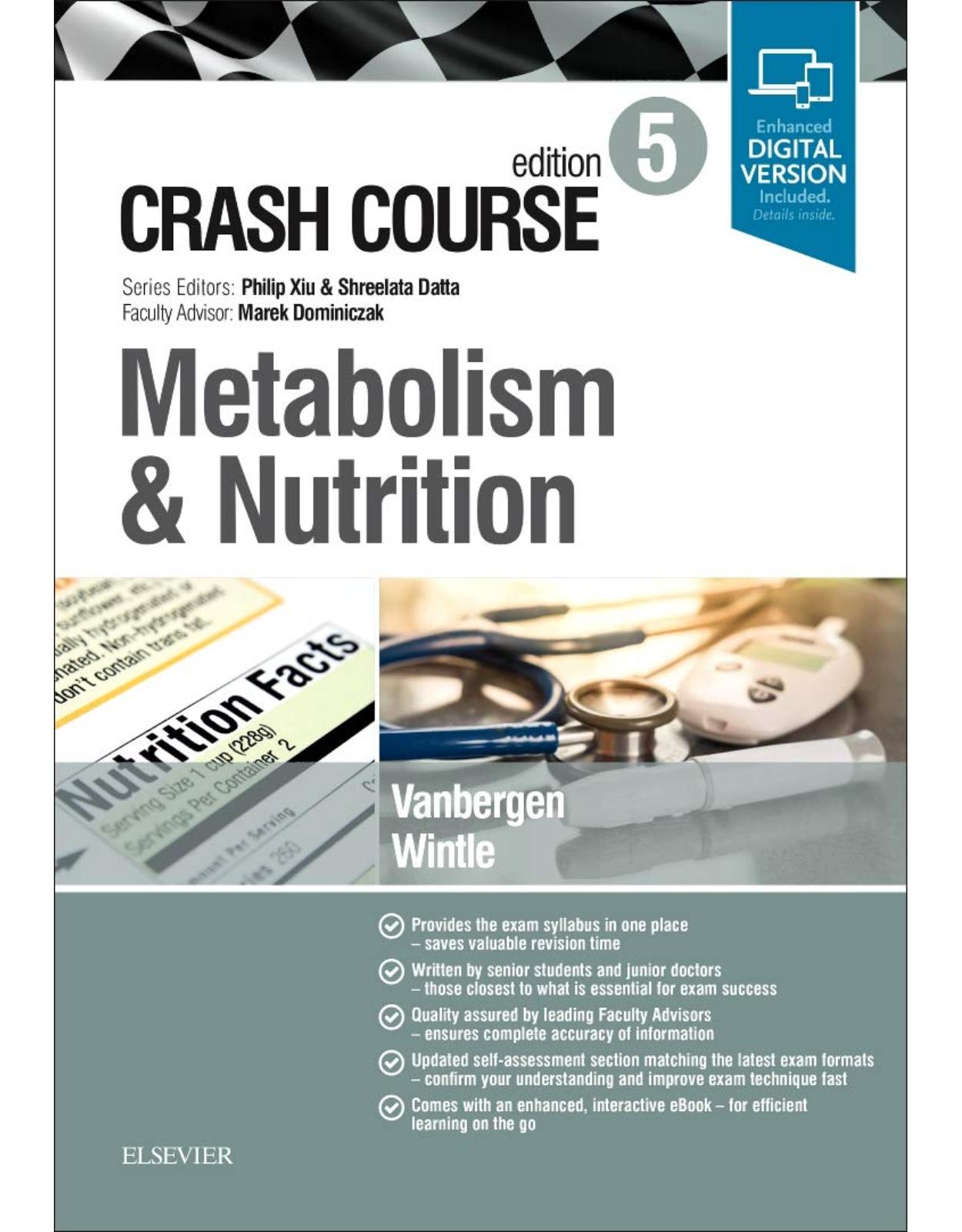
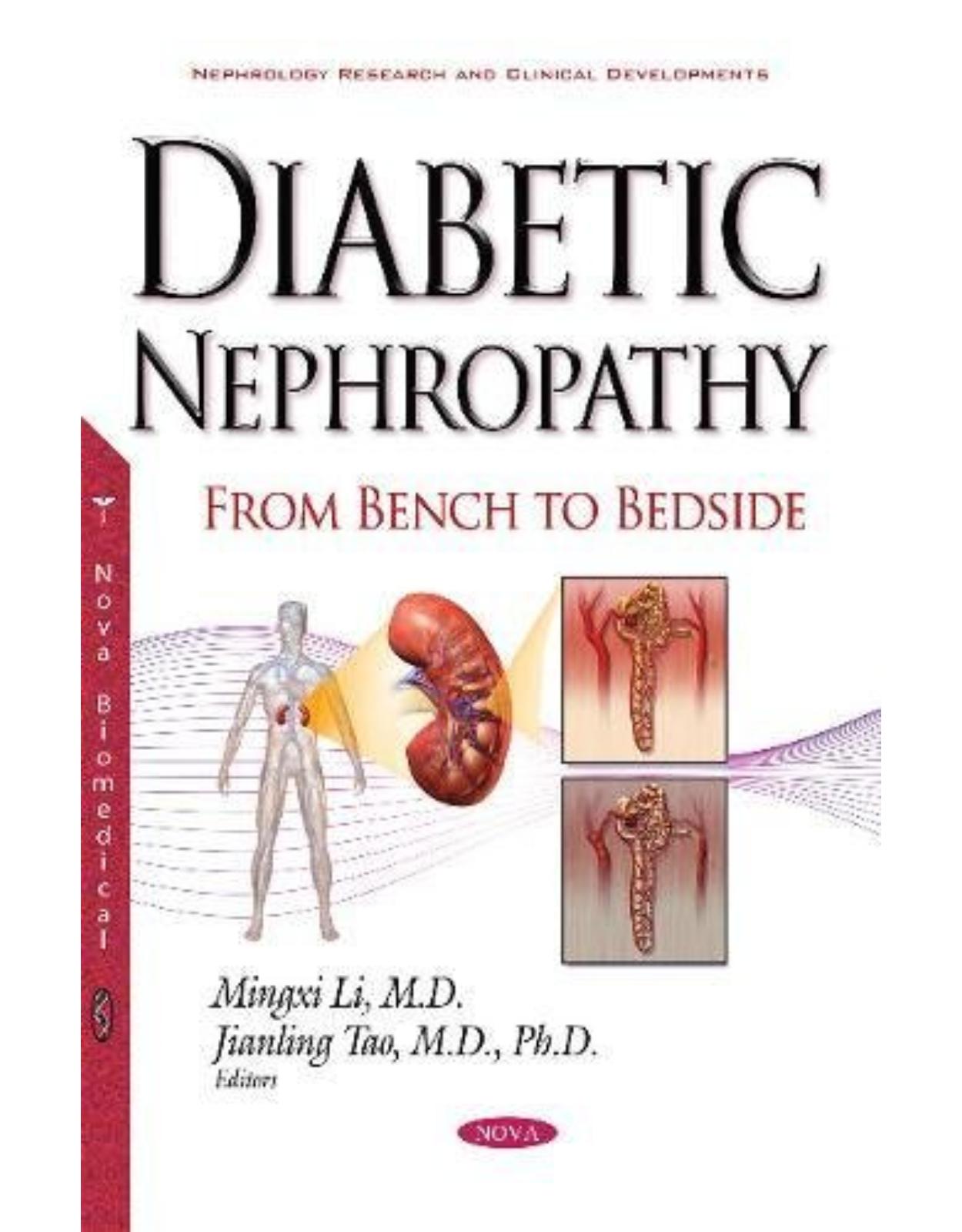
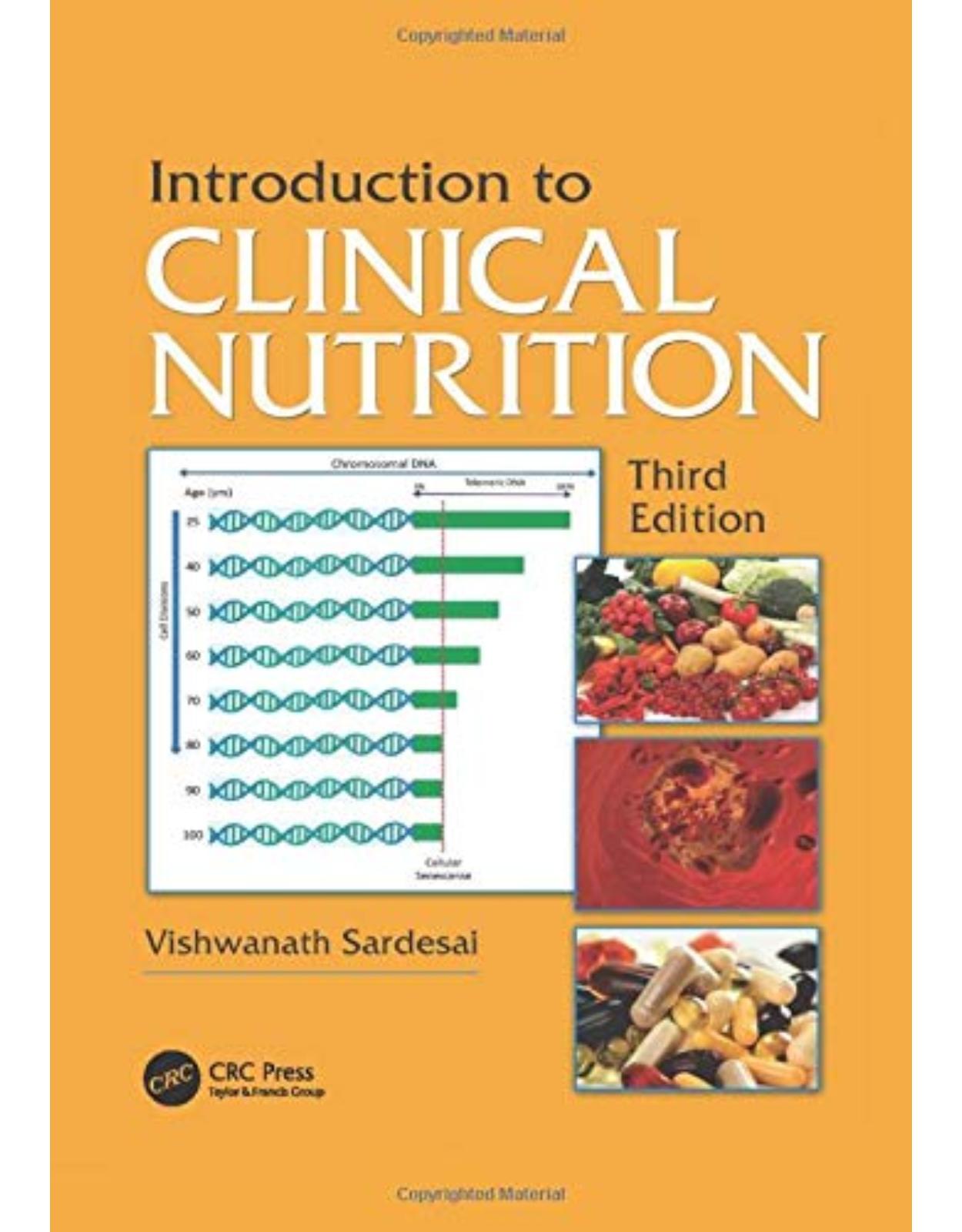
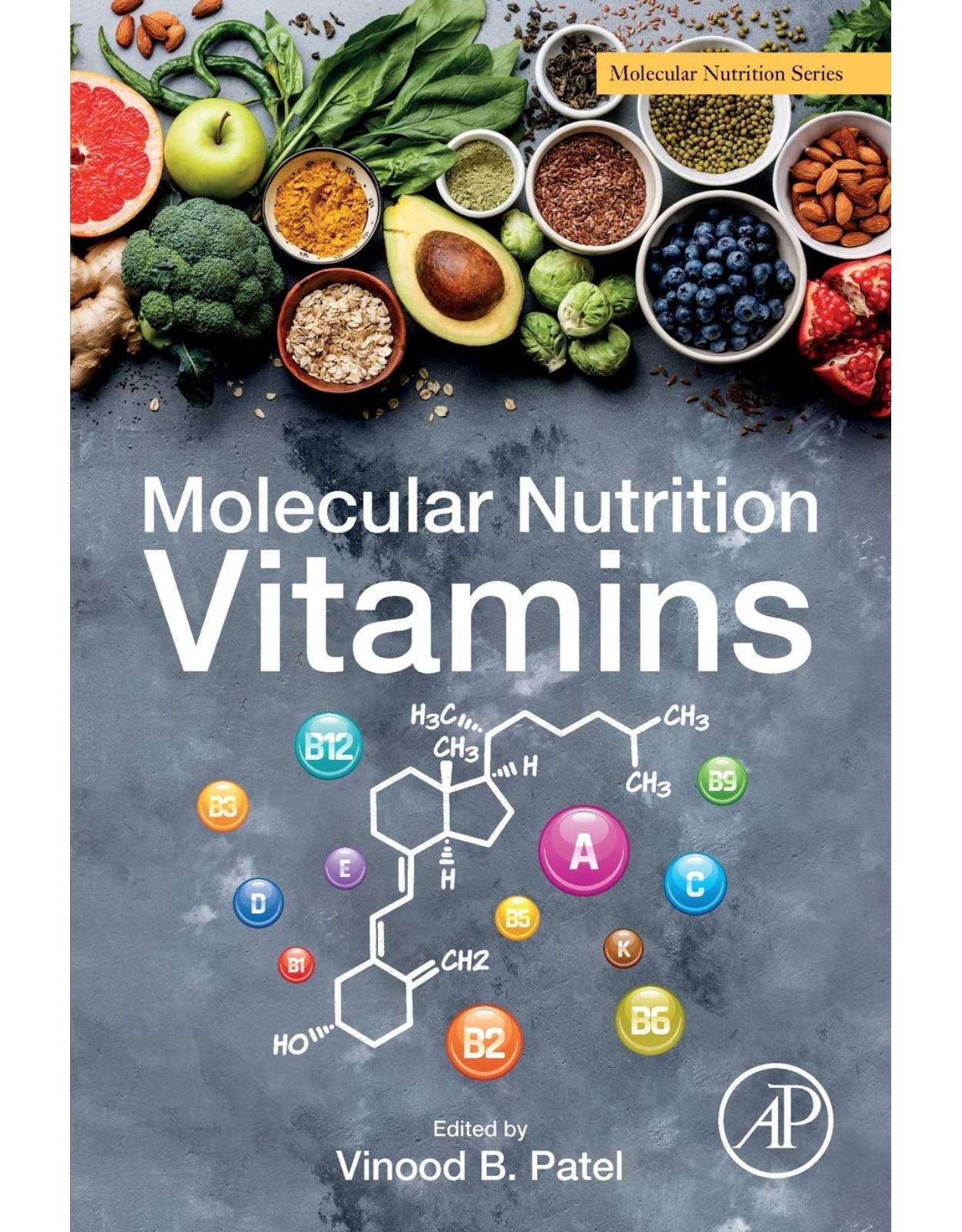
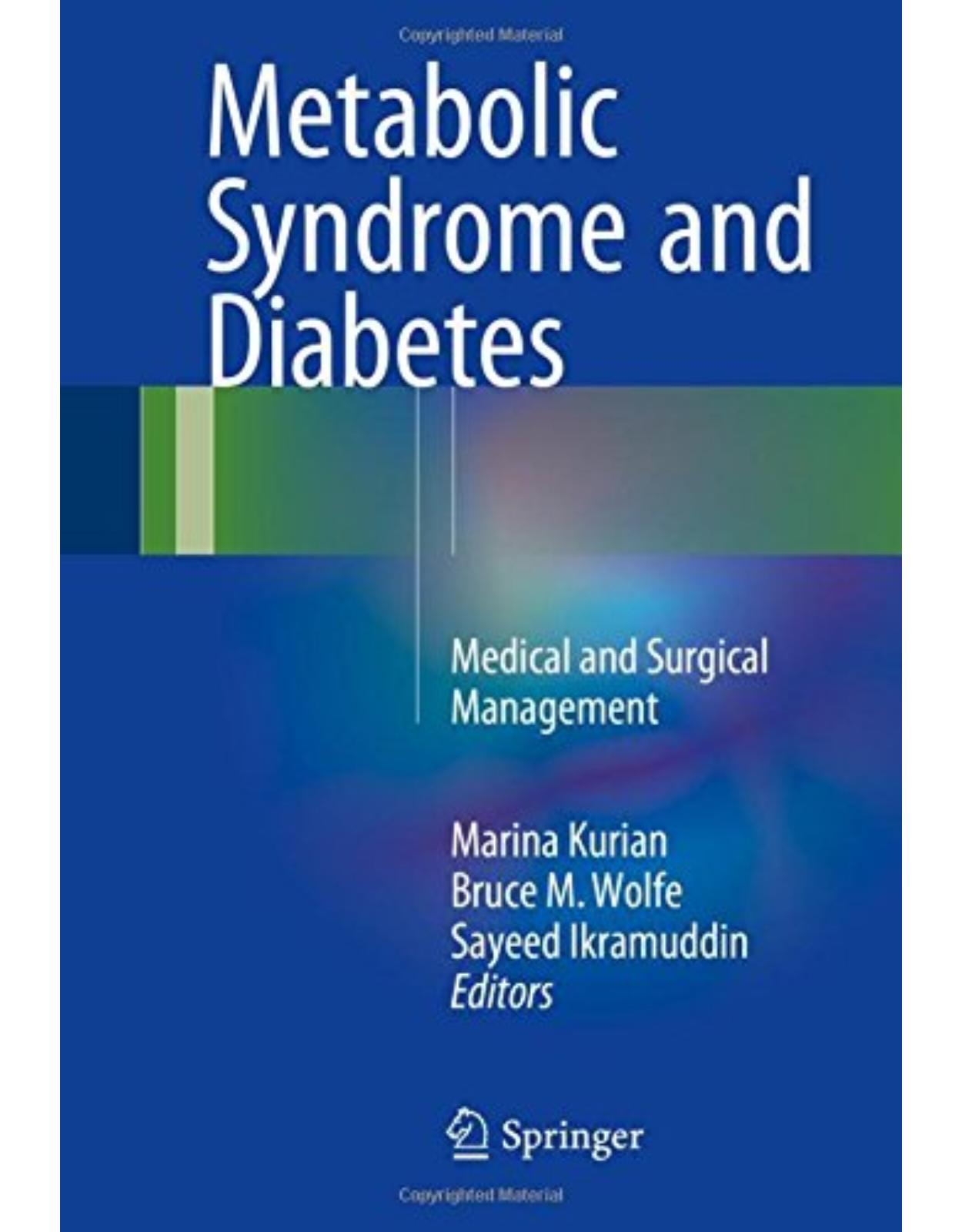
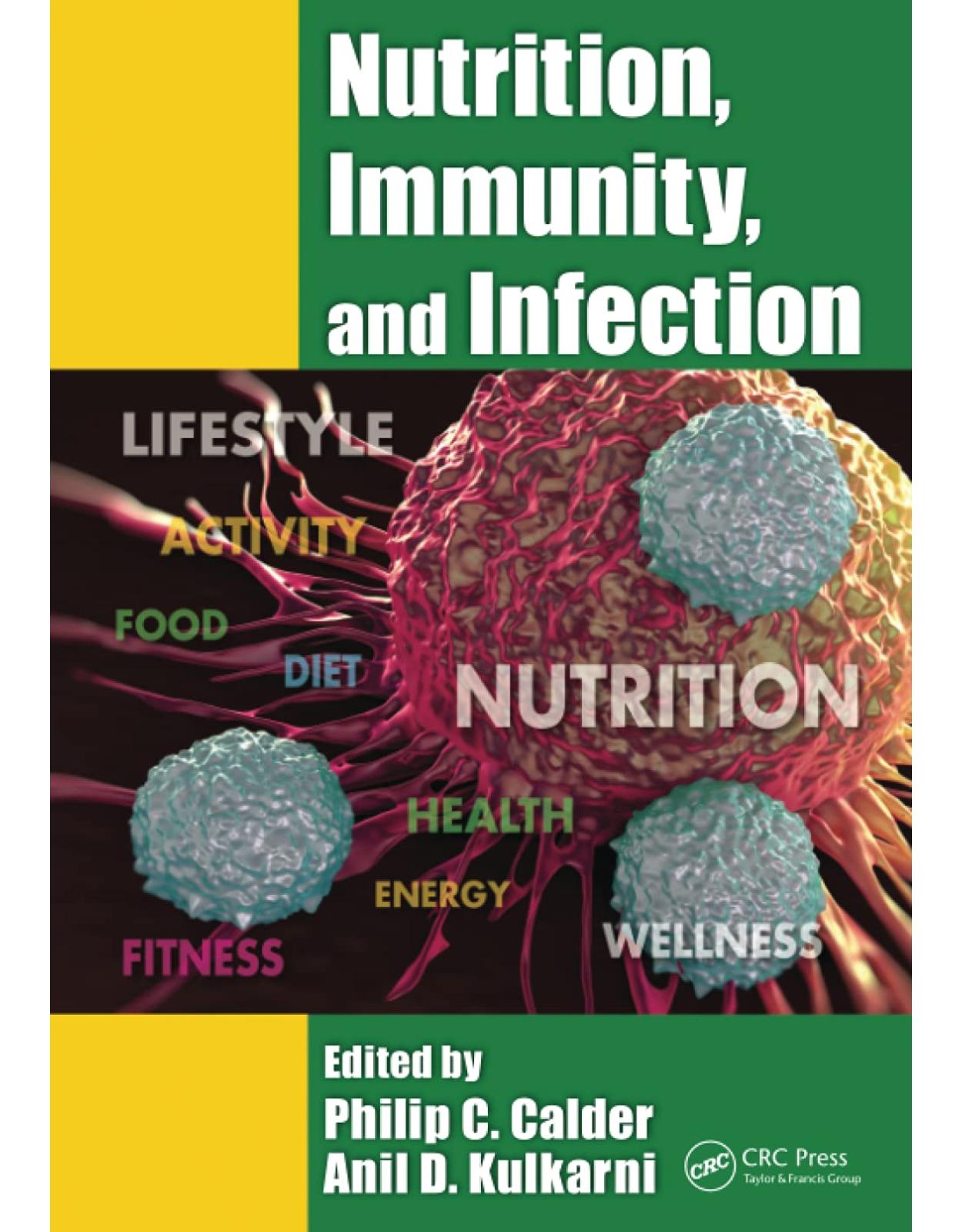
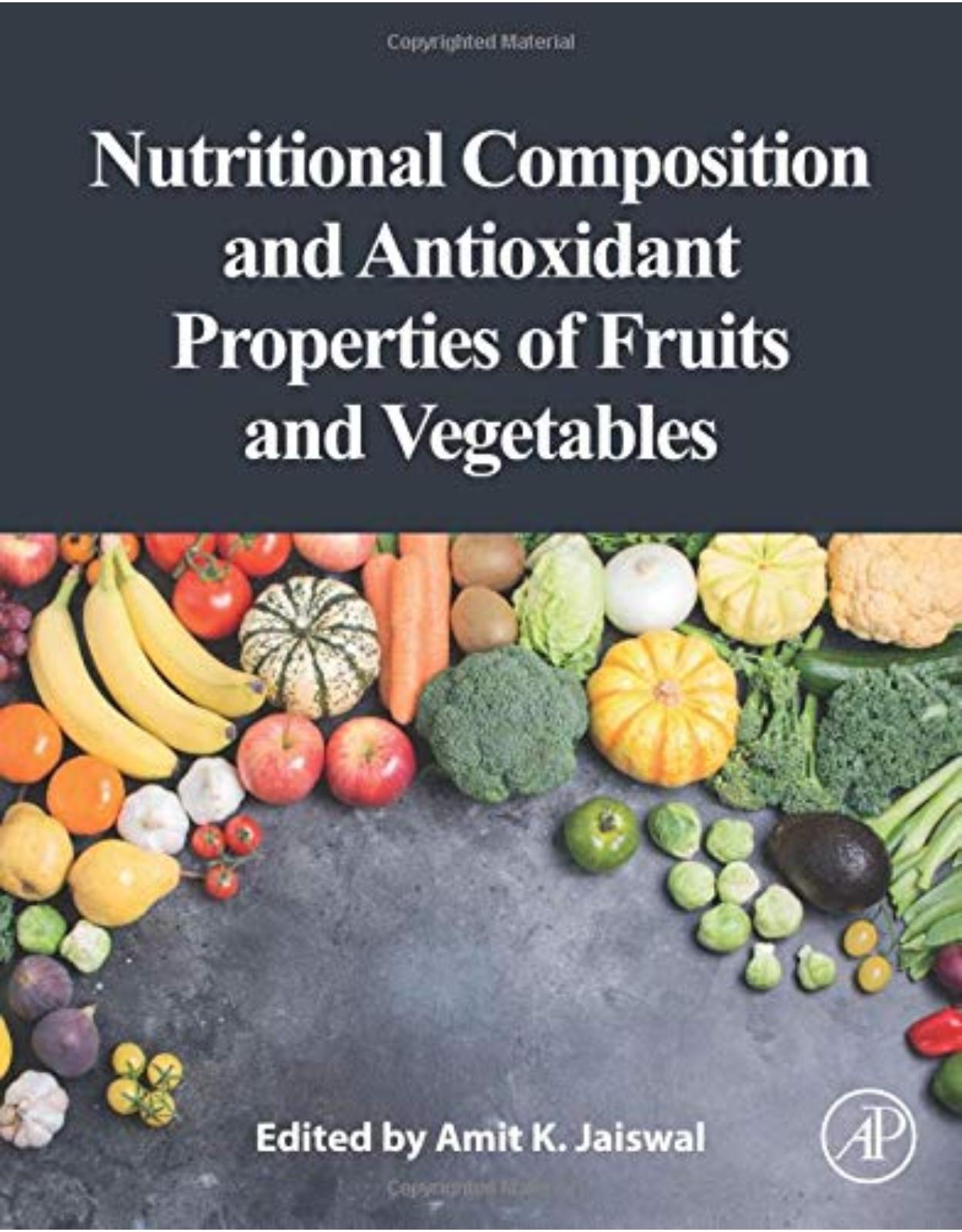
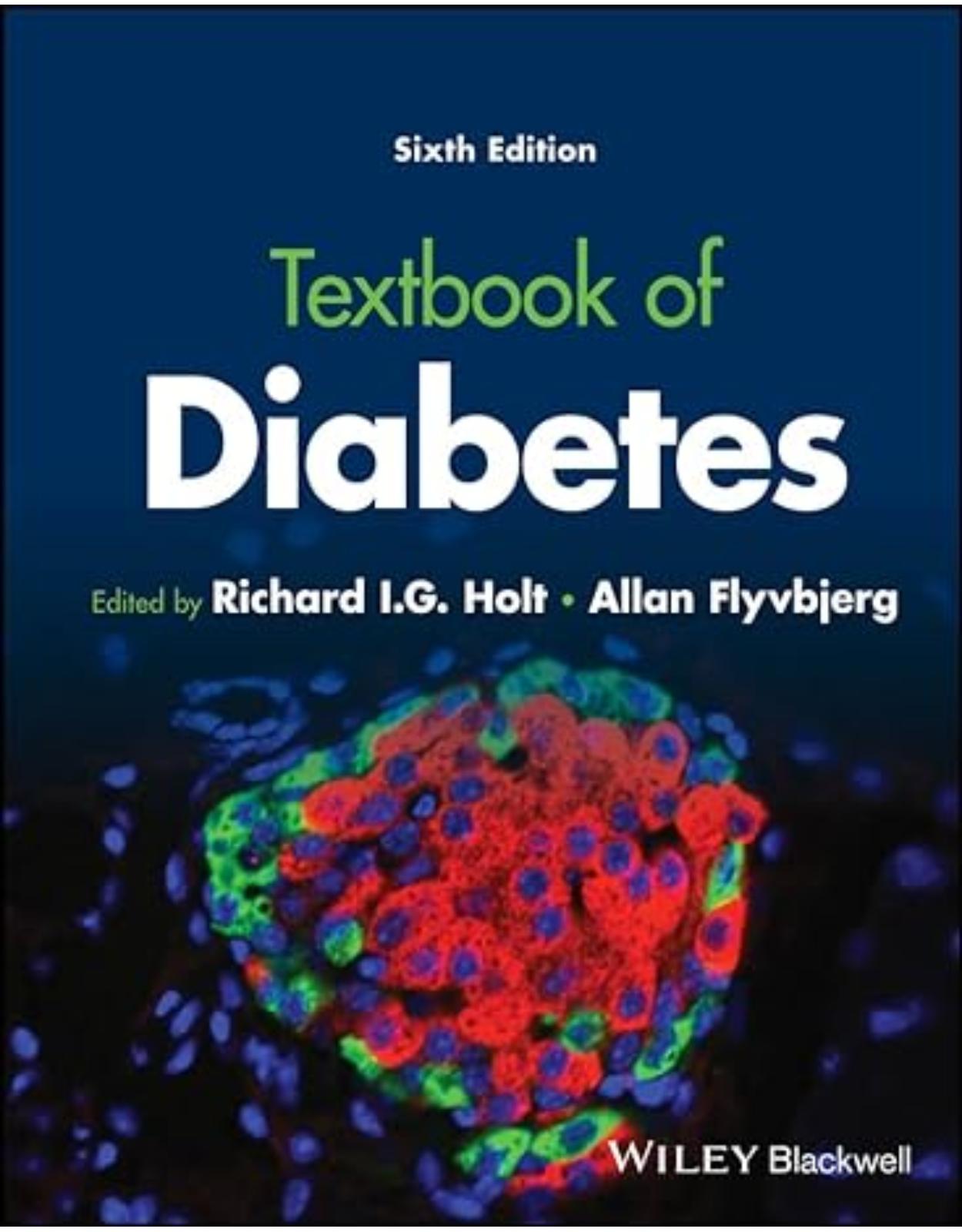
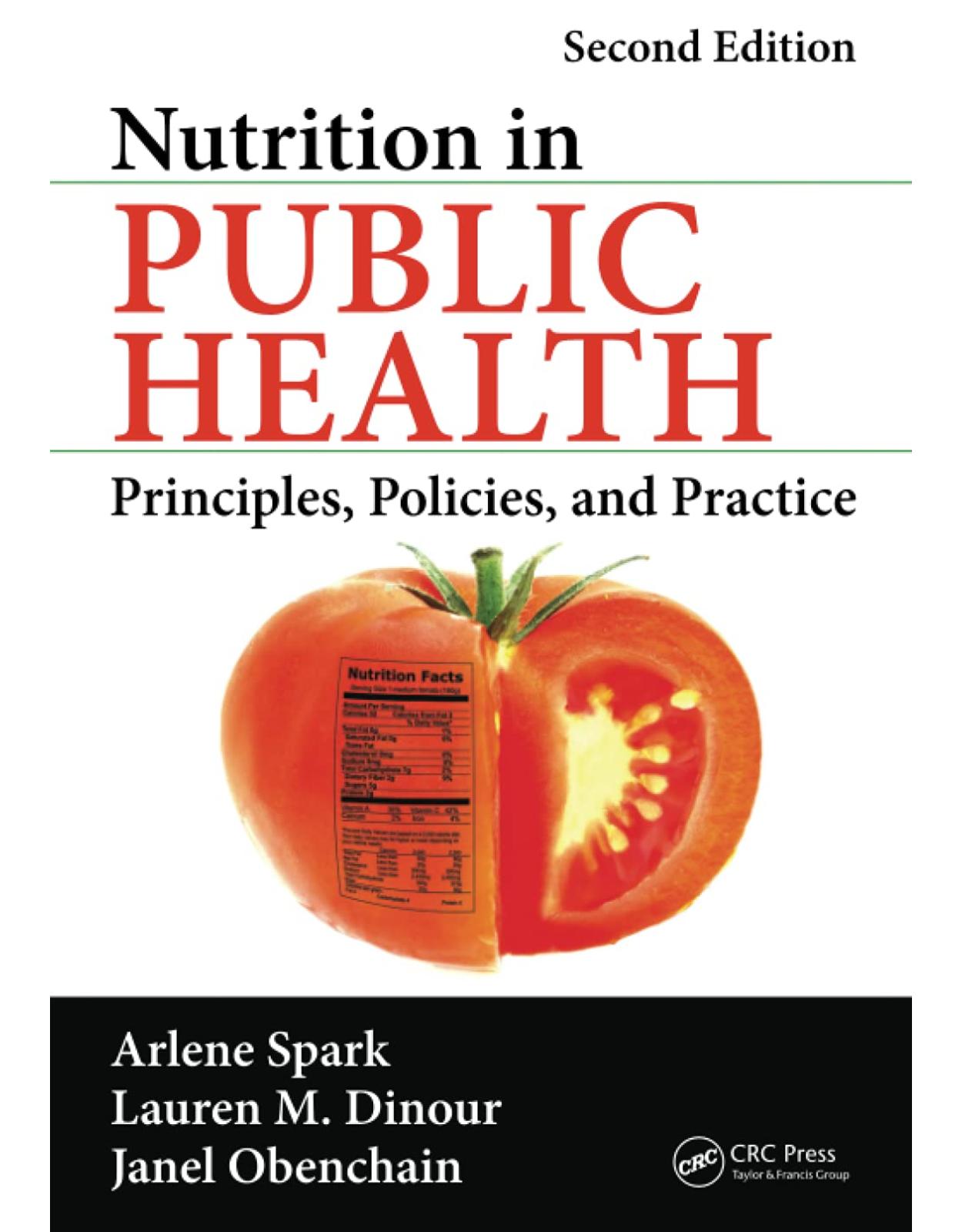
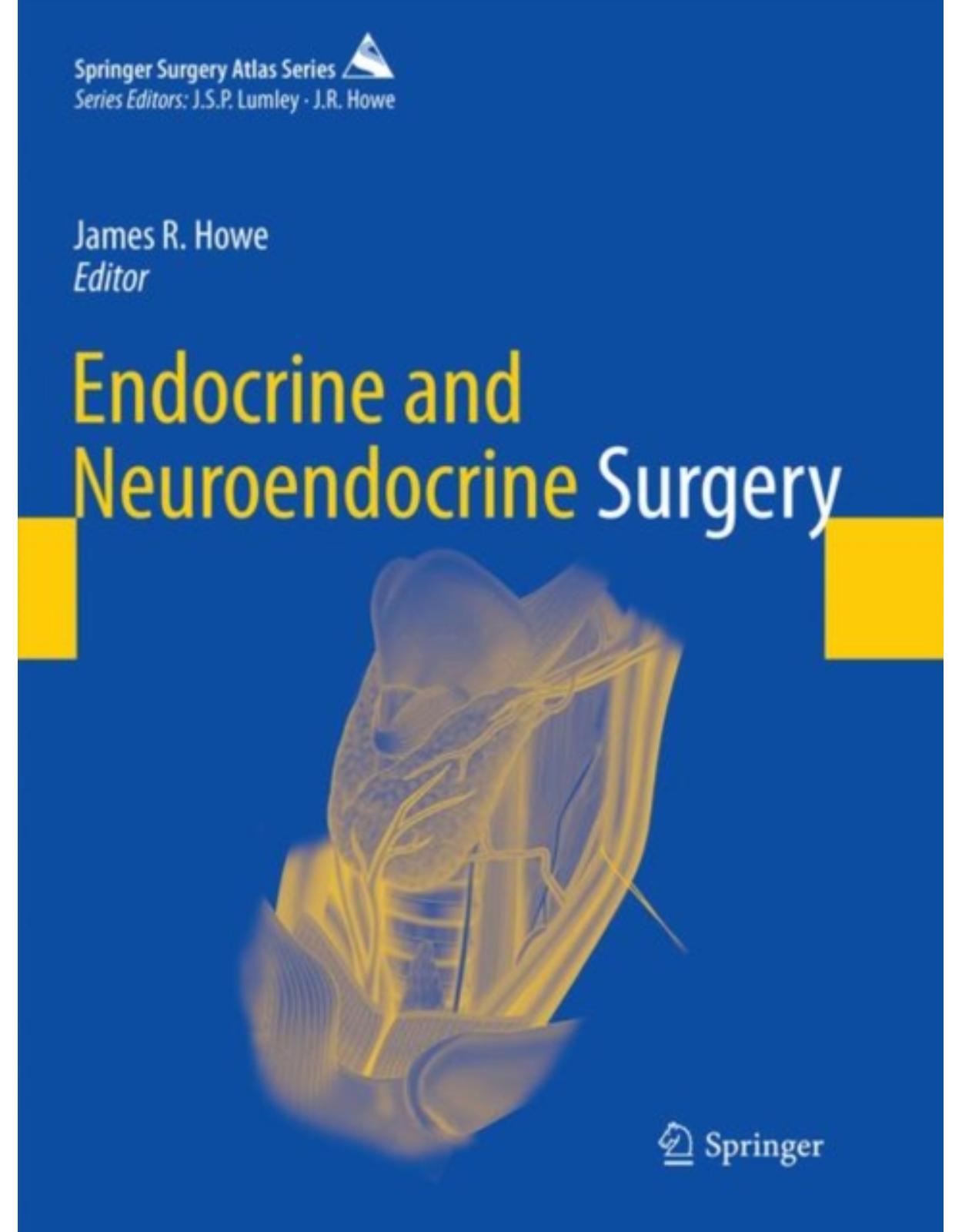
Clientii ebookshop.ro nu au adaugat inca opinii pentru acest produs. Fii primul care adauga o parere, folosind formularul de mai jos.